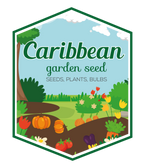
Trumpet Narcissus "Standard Value" ,Bloom Late Spring-NOW SHIPPING!
FAST & FREE SHIPPING
Over 90% of our orders are processed and ship out by next business day.
We are currently processing and shipping most orders within 1-3 business days. (backorders not included) Due to high demand during the peak months of January to May, orders may require additional time for packaging /shipment.
Free shipping for orders over $54.95. Excludes live plants, fresh products And Stackable Black Plastic Nursery Crate
Shipping and handling charges will cover outbound freight and packaging materials. Fees are applicable to all orders, based on total order value pre-tax. Expedited services can be selected at Checkout with extra fees.
- Free shipping to lower 48 states on orders $54.95+
- (Most Items), excluding live plants, plant bulbs, and black plastic nursery crate.
- Safe Seed Pledge
- Satisfaction Guaranteed
- Select your desired size and/or color from the available options.
Standard Value
This late-blooming yellow trumpet daffodil sets the standard for all daffodils. It has all the qualities that a great daffodil must meet, including its suitability as a cut flower.
Naturalizing Daffodils. Probably nothing in the gardening world is more foolproof and more rewarding than "naturalizing" daffodils. Because unlike most other garden flowers, these fantastic plants are super-easy to plant in fall, they don't care about soil, as long as it's well-drained, and they'll bloom beautifully for you with absolutely no work every spring after you plant them. Best of all, daffodils increase over the years, each bulb developing into a blooming clump. All you have to do is pick the spots. The one thing to remember is that you won't be able to mow that area until the tops die down. Everything else takes care of itself. In a new or established wildflower meadow, the wildflower plants grow up around the daffodils hiding the fading foliage, so there's no work to do. And if you're planting wildflower seed, what could be easier that to pop in the bulbs when you have the ground already turned?
OK, what's the best Dutch daffodil for naturalizing? Well, most daffodils naturalize just fine, but if you want the classic drift of golden blooms, here's the story.
Undemanding and Reliable
Deer Won't Eat
Good for Naturalizing
PLANT INFORMATION
SCIENTIFIC NAMENarcissus
COMMON NAMEDaffodil
VARIETYDutch Master
CLASSIFICATIONTrumpet
PLANT TYPEBulb
ORIGINUnited Kingdom
Caution: irritant to skin and eyes, harmful if eaten. Daffodil bulbs should be planted outdoors in October and November, with the pointed end facing upwards, at a depth of approximately 10cm (4"). Choose a sunny or semi shaded position in moist, free draining soil. Daffodils look particularly eye-catching when grown in drifts in borders or informal areas of grass. Cast the bulbs across the area and plant them where they land for a really natural effect.
For an attractive indoor display, plant Daffodils in containers in bulb fibre and position them in a cool garage or other well ventilated, dark position at a maximum temperature of 10°C. Water when necessary to keep the compost moist. When the growing shoots reach a height of 10 cm (4") move the containers to a cool bright position indoors (approximately 16°C).
Materials: Container,Spring,Garlic,Early,Fall Planting,Heirloom Bulb,Tulipa,Trumpet Narcissus,Daffodil Dutch Master,Bloom Midspring,NOW SHIPPING Select your desired size and color from the available option
HOW TO GROW GUIDE
LET OUR CUSTOMER SPEAK FOR US

![[Seeds] - Caribbeangardenseed](http://caribbeangardenseed.com/cdn/shop/files/gift-card-gift-card-1_1024x1024_dfa857db-9150-4315-a362-7f0bb3fb9c47_60x28.png?v=1722895789)








